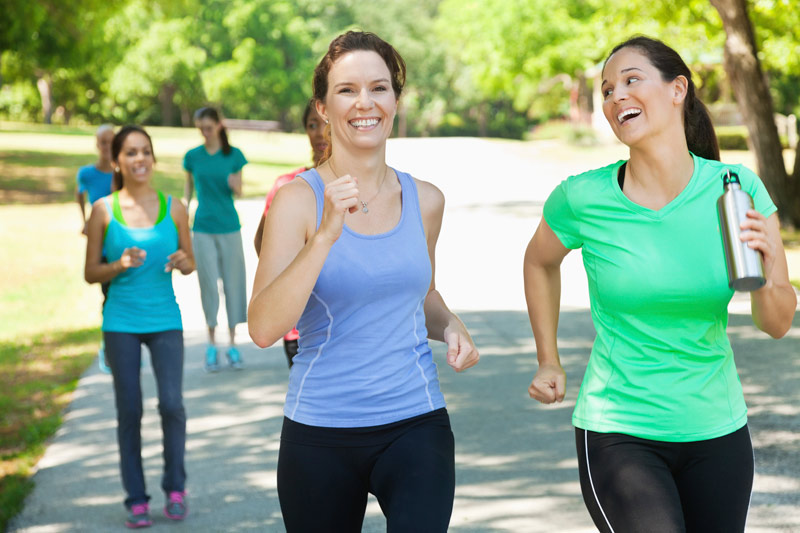Walk Your Way to Fitness—Tips to Improve your Workout Routine One Step at a Time
By Rachelle Stoller
April 2016 View more Health & Fitness
 Whether you are looking for some exercise, or an easy stroll, Naperville and surrounding communities have some of the best paths in the area to make sure walkers get in their 10,000 daily steps.
Whether you are looking for some exercise, or an easy stroll, Naperville and surrounding communities have some of the best paths in the area to make sure walkers get in their 10,000 daily steps.
For Your Health
Known as running’s low-impact little sister, walking is a great way to get your heart pumping. Research reported by the American Heart Association shows that walking for at least 30 minutes a day can translate to good overall preventative health.
Walking can lower your risk of heart disease and type 2 diabetes, improve blood pressure and blood sugar levels, and reduce your risk of breast and colon cancer. Studies also show that walking can reduce your risk of osteoporosis and put you in a better mood.
Be Prepared
Just because walking is considered low-impact doesn’t mean you don’t have to prepare, especially in the hot summer months.
Hydrate First, Second, and Last
When you are planning to go for a walk, make sure you think about hydration, says Rob Chambers, A.C.E. certified personal trainer at Eco Gym in Naperville. “I recommend that my clients consume four to six ounces of water for every 15 minutes of exercise. This helps regulate body temperature and prevent cramps,” Chambers adds. He also suggests drinking cold water instead of water at room temperature because the cold water will help counteract the heat of summer and bring your body temperature back as close to normal as possible.
Stretch It Out
Chambers also recommends stretching before and after a strenuous walk. While many people associate injuries with running, walkers can also experience joint and muscle pain if they don’t warm up, especially, when speed-walking or walking with weights.
Fashion Forward
When choosing what to wear for your walk, keep in mind you will get warmer over time during your walk. Chambers suggests preparing for how warm you are going to feel near the end of your walk, instead of matching the temperature when you first walk out the door.
“People tend to overdress and then overheat,” said Chambers. “That can induce heat stroke and accelerate dehydration.” Chambers also cautions not to be out too long on the hottest days and to stay hydrated. This is especially important for children and anyone sensitive to the heat and humidity.
Choose Your Shoes Carefully
Another consideration is footwear. A traditional walking shoe may be enough support for a stroll, but walking for exercise requires more cushion. Amber White, associate manager of the Naperville Running Store, recommends using a running shoe. “When you are walking for exercise, you move faster,” White says. “A running shoe absorbs more impact, which is easier on the joints.”
The Path Best Travelled
If you are looking for a place to truly get your walk on, try www.mapmywalk.com or www.scout.me to find recommended paths, total distance, terrain and any other handy information fellow walkers have to share. Both websites are available as apps on your smartphone, so you can take them with you as you walk and provide your own commentary.
Take the Scenic Path
In the mood for a stroll? We might be a little biased, but few paths, short of Chicago’s Lake Shore Drive, compare to Naperville’s Riverwalk. End to end, this 1.75 mile stretch provides plenty of sensory exercise such as beautiful flowers and heartfelt messages at Fredenhagen Park and the Exchange Club Fountain, weekly carillon recitals emanating from the Moser Bell Tower, toddlers experiencing the joy of dipping their toes in the Dandelion Fountain for the first time, families soaking up the sun at Centennial Beach and children being children at the Jaycees Playground.


